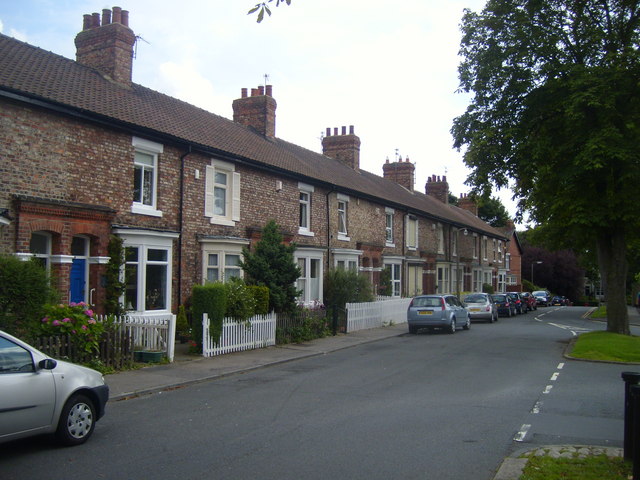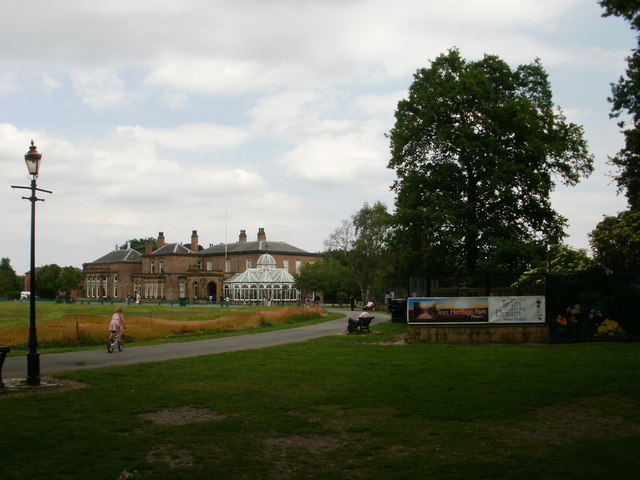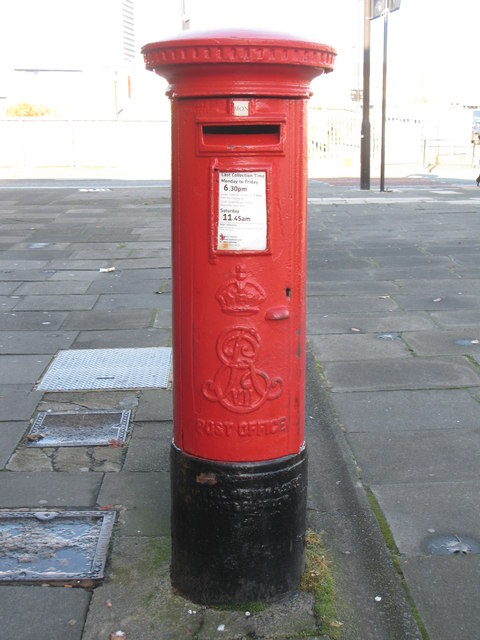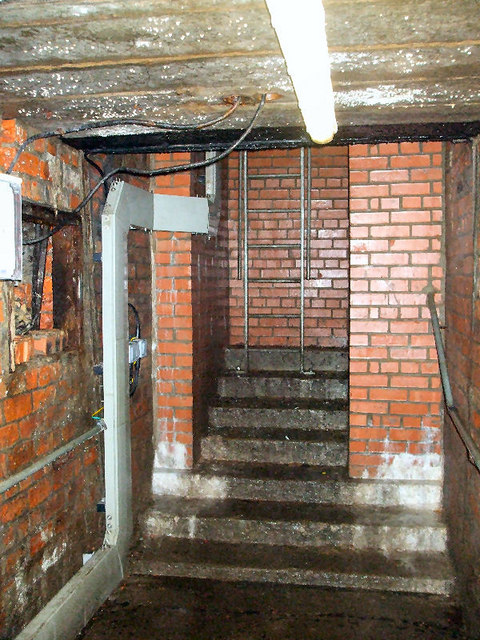Topics > Tees Valley > Stockton-on-Tees > Stockton-upon-Tees Parish, 1848
Stockton-upon-Tees Parish, 1848
STOCKTON-UPON-TEES (St. Thomas), an incorporated market-town, an inland port, a parish, and the head of a union, in the S.W. division of Stockton ward, S. division of the county of Durham; containing, with the townships of Preston and East Hartburn, inhabitants, of whom 9,825 are in the town, 20 miles (S.S.E.) from Durham, and 244 (N. by W.) from London. This place is of considerable antiquity, and the discovery of a Roman coin near the castle site has led to the conjecture that it was a station of that people, but nothing to warrant the opinion is recorded. It formed part of the possessions of the see of Durham at an early period, and the castle was occupied by Hugh de Pudsey, bishop of the diocese in the reign of Richard I. His successor, Philip de Poictou, entertained King John here in 1214, and the charter granted by that monarch to the burgesses of Newcastle bears date at Stockton. It continued to be the occasional residence of the bishops, and seems to have escaped in a great measure the commotions and border feuds which agitated this part of England, with the exception of an inroad of the Scots in 1322, who plundered and burnt the town. At the period of the civil war in the 17th century, the castle was taken by the royalists, some importance being attached to its commanding the old passage of the Tees; it was afterwards surrendered to the republican forces, and in 1645 was garrisoned by the Scots, but delivered by them to the English. In 1647 it was ordered by the parliament to be dismantled, and about five years subsequently its complete destruction was accomplished, no part of the structure now remaining, although the fosse may still be traced. The town suffered severely from the overflowing of the Tees, in 1771, 1783, and 1822.
It is situated on an eminence on the northern bank of the river, and has advanced rapidly in prosperity since the middle of the 17th century, at which period it consisted principally of mean hovels, the better houses being constructed with "post and pile," and not one built of brick. The town is now one of the cleanest and handsomest towns in the northern part of the kingdom. The main street, which is about half a mile in length, is broad, and contains numerous well-built houses, chiefly of brick, with a few of stone erected with the materials of the dilapidated castle: from this thoroughfare smaller streets branch off towards the river, and on different sides of the town a great number of new houses have been recently built. The streets are well paved, under the authority of an act of parliament passed in 1822; and in 1846 an act was passed for more effectually lighting the town. A good stone bridge over the Tees was commenced in 1764, and completed in 1769, at an expense of £8000; it has five elliptical arches, of which the central is 72 feet in span, and 23 above low-water mark. A second bridge was erected in 1843. The theatre, in Green-Dragon-yard, Finkle-street, is an inferior building; a mechanics' institute, with a library, was established in 1824, and there are a subscription library and two newsrooms. Races are held in August, a week after those of York, at Tibbersley, about three miles from Stockton; and assemblies occasionally.
The situation of Stockton, at a distance of twelve miles only from the sea, and on a river navigable eight miles above the town, affords it many advantages; and the increased shipping, and amount of duties, evince the progressive extension of its mercantile interests. The port is a member of that of Newcastle; the dues, from the payment of which vessels belonging to the cinqueports are exempt, are the property of the bishop, and are held on lease by the corporation. Ships of large size were formerly obliged to receive and unload their cargoes at Portrack, which though only a mile from the town by land, is by the circuitous course of the river more than four times that distance. But in 1808, a company was incorporated by act of parliament, called the Tees' Navigation Company; and a cut was made from Portrack to the town, capable of admitting vessels of 300 tons' burthen. This improvement greatly benefited trade, and amply repaid the shareholders; and in 1828 an act was obtained for the extension of the cut to Newport on the south shore, and for the construction of other works for deepening the river, and facilitating the navigation between Stockton and the sea; all of which have been carried into effect under the superintendence of Mr. W. A. Brooks. The cut to Newport is threequarters of a mile in length, and 80 yards broad; and at a comparatively small outlay of capital, the navigation of the Tees has been so much improved that vessels drawing 15 feet water can, in ordinary spring tides, sail up to the quays at Stockton; whereas previously, trading vessels of not more than 100 tons were obliged to discharge great part of their cargoes before they could approach the town. The shifting sand-banks, also, in the bed of the river, which greatly obstructed its navigation, have been completely removed by the construction of jetties contracting the channel. The great increase of shipping consequent upon the introduction of the coal-trade into the Tees, rendered the exhibition of lights at the mouth indispensable. Two leading lights on the Durham shore, one red, and the other bright, serve as guides to clear the Redcar rocks, and make for the red-bar buoy, from which two other lights on the Bran sand, on the north side of the estuary, lead up the channel, till it becomes necessary to change the course for a floating light near the fifth buoy, where secure anchorage is found in four fathoms at low water. Formerly, the sailing course into the Tees was much more direct and convenient for a southern trade; and the Navigation Company have it in contemplation to restore the course of the river to its old bed, which ranged nearly due east and west.
In 1815, the town was made a bonding-port for certain goods. Its principal trade coastwise is with London, Hull, Leith, Sunderland, &c., and comprises the exportation of most articles of agricultural produce, coal, linen aud worsted yarn, and particularly lead, of which many hundred tons, brought chiefly from Yorkshire and the borders of Durham and Northumberland, are annually shipped. Lead also forms the chief article of exportation in the foreign trade, which is with the Baltic, Holland, Hamburgh, and the British colonies, whence it receives in return materials for ship-building, timber for other purposes, tallow, &c. Two shipping companies have been established in the London, and two in the foreign, trade. The number of vessels registered at the port, of above 50 tons, is 253, and their aggregate burthen 53,353 tons.
The principal branches of manufacture are connected with shipping: there are two ship-builders' yards, five factories for sailcloth, two rope-walks, two iron-foundries, and a block and pump manufactory; also three breweries, some corn-mills, a mill for spinning yarn, and one for worsted. The fishery of the Tees was formerly a great source of prosperity to the town, but it has considerably declined; it belongs to the Bishop of Durham, and is gratuitously open to poor fishermen under certain regulations. A railroad from Witton-Park and other collieries, by Darlington, to this place, twenty-five miles and a half in length, was constructed in 1825, chiefly for the conveyance of coal from the great Auckland field: the line was subsequently extended to Middlesbrough and Redcar. A branch of the Clarence railway from the inland districts also extends to Stockton. Another branch, commencing in the township of Billingham, and called the Stockton and Hartlepool railway, proceeds in a north-east direction, and afterwards along the sea-coast until it reaches the harbour of Hartlepool. It is chiefly used for the conveyance of coal, for which it was completed November 12th, 1840, but passengers are also conveyed, for whose accommodation, and for traffic in general merchandise, it was opened on the 10th of February, 1841. An act was passed in 1846 for a direct railway from Stockton to Northallerton, 20½ miles in length. The market, granted by Bishop Anthony Beck in 1310, is on Wednesday and Saturday, and is well attended; the shambles, erected in 1825, in front of the town-hall, form a neat range of inclosed brick buildings. A handsome stone column of the Doric order, thirty-three feet high, stands in the centre of the market-place. Fairs are held on the last Wednesday before May 13th and on November 23rd, which are general and statute fairs; and there are cattle-fairs on the last Wednesday in every month.
The period at which Stockton was incorporated is uncertain, but is supposed to be about the commencement of the 13th century; the last charter was granted by Bishop Cosin, in 1666. The government is now vested in a mayor, six aldermen, and eighteen councillors, under the act 5th and 6th of William IV., cap. 76; the borough is divided into two wards; the mayor and late mayor are justices of the peace, and three others have been appointed by commission. The town comprises two constablewicks, one called the Borough, which is wholly freehold, and the other termed the Town, which is partly held by copy of court roll under the Bishop of Durham, and partly by long leases under the vicar of the parish. The bishop is lord of the borough, and by his steward holds courts leet and baron, at which suits of trespass and debts under 40s. are cognizable; a halmote court occurs twice a year, in which similar causes are tried, and petty-sessions for Stockton ward are holden here. The powers of the county debtcourt of Stockton, established in 1847, extend over part of the registration-district of Stockton and Sedgefield. The town-hall, built in 1735, and enlarged in 1744, stands nearly in the centre of the main street, and is a handsome quadrangular building of brick, surmounted by a light clock-tower and a spire, with a piazza extending along the lower story on its north side.
Stockton was formerly a chapelry, in the parish of Norton, from which it was separated by an act of parliament obtained in 1713. The living is a vicarage not in charge; net income, £400; patron, the Bishop; impropriator, R. W. Myddleton, Esq. The ancient chapel, supposed to have been erected about the year 1237, was taken down, and the present church was completed in 1712, at an expense of about £1600: it is a neat and commodious edifice of brick, with a tower 80 feet high; in the vestry-room is a small library, chiefly of theological works. The church, dedicated to the Holy Trinity, to which a district containing a population of 4000 persons has been assigned, occupies a site given by Bishop Van Mildert. It is a handsome structure in the decorated English style, with an octagonal tower surmounted by a graceful spire, and contains 1200 sittings, of which 400 are free, in consideration of a grant of £600 from the Incorporated Society. The living is a perpetual curacy; net income, £300; patron, the Bishop. There are places of worship for Particular Baptists, the Society of Friends, Independents, Primitive Methodists, Unitarians, Wesleyans, and Roman Catholics. The Roman Catholic chapel, on the road to Norton, is after a design by Welby Pugin.
A charity school was founded by subscription, in 1721, since which period it has been endowed with various bequests and donations, including £1100 by George Brown in 1811, £950 by George Sutton in 1815, £700 by the Bishop of Durham in 1824, £200 by John Swainson, and £100 each by the trustees of Lord Crewe's Charity and Nicholas Swainson, altogether producing an annual income of £250. The present building was erected in 1819, and the school is now conducted on the national system. A school of industry for girls, instituted in 1803, is supported partly by endowment. Stockton, in conjunction with Norton, is entitled to a scholarship at Brasenose College, Oxford, with an endowment of £8 per annum, founded by Dr. Claymond, formerly vicar of Norton. Some almshouses, originally erected about the year 1682, were rebuilt in 1816, from a gift of £3000 by George Brown, Esq.; they contain a committee-room and dispensary, and thirty-six apartments. Elizabeth Bunting, in 1765, bequeathed the sum of £300 for the benefit of poor persons, which was invested in the purchase of £378. 13. three per cent, consols. The union comprises 42 parishes or places, of which 30 are in the county of Durham, and 12 in the N. riding of York; and contains altogether a population of 33,743. Stockton is the birthplace of Joseph Ritson, author of Ancient Songs and Metrical Romances; of Brass Crosby, mayor of London during the commotions occasioned by Wilkes; and of Joseph Reed, a dramatic poet.
Extract from: A Topographical Dictionary of England comprising the several counties, cities, boroughs, corporate and market towns, parishes, and townships..... 7th Edition, by Samuel Lewis, London, 1848.

Co-Curate Page
Hartburn
- Overview About Hartburn Map Street View Hartburn is a suburb of Stockton-on-Tees in Tees Valley, previously a separate village, before the growth of Stockton. Historically it was known as East …

Co-Curate Page
Preston-on-Tees
- Overview About Preston-on_Tees Map Street View Preston-on-Tees is a settlement located at the northern edge of Eaglescliffe, in the borough of Stockton-on-Tees. Historically it was a township in the ancient …


Co-Curate Page
Hartburn
- Overview About Hartburn Map Street View Hartburn is a suburb of Stockton-on-Tees in Tees Valley, previously a separate village, before the growth of Stockton. Historically it was known as East …










